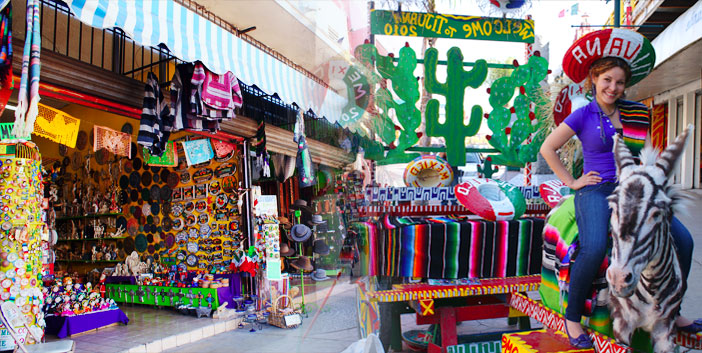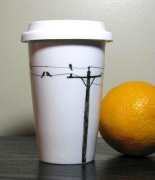Mexican coffee with small and medium content
Mexican coffee cups are as rough, warm, and colorful as their people, and coffee is as large as the serving.
Tijuana is located in northwestern Mexico, close to the U.S. border, and it takes about half an hour to drive from Santiago. Travelling to Tijuana on a Taiwanese passport does not require a visa unless you travel deep into Mexico. Chose a sunny lukewarm spring day, and friends drive together on the set off.
Tijuana is a tourist hangout. The city is bustling with shops and people. As Chinese and Japanese tour groups often visit, the shop assistants in the local shops are all proficient in Mandarin and Japanese. All the way shopping, the ears are all Chinese greetings: "Miss, come and sit","Welcome","Hello","Good morning","Beautiful not expensive"... This can prove the strength and influence of China's economy.

Tired of walking around at noon, we chose a restaurant that seemed very Mexican for a rest and dinner. Mexican restaurants are colorful and lively, with traditional decorations such as wide-brimmed hats hanging on the arches and walls, and a few cacti dotted between corners from time to time. Before we ordered, the restaurant brought us two plates of corn chips and salsa sauce for our appetizers. Salsa is a hot and sour sauce mixed with red tomatoes, onions, coriander, peppers, etc. It is crispy and delicious to eat with corn chips. It is very appetizing. We ordered beans in hot water, ribs with sauce, seafood Taco with cheese, lightly spicy shelled herb prawns, fried fish fillet with ink, etc. Each dish comes with a lot of vegetables, and each person has a large plate, which makes us bend over. Although I was full, I ordered a cup of Mexican coffee. Mexican coffee cups are as rough, warm, and colorful as their people, and coffee is as large as the serving. I thought the big cup must be thin and light as water, but I didn't expect it to feel proper and moderate in consistency after entering the mouth, slightly bitter but with a trace of fragrance and mellow. Drink it after dinner, only feel comfortable, stagnation greasy completely disappear. I asked the manager what the secret was. It turned out that the coffee was mixed with traditional Mexican tequila spirit, which was probably the reason for the special fragrance.
Go to Mexico, go shopping in Mexico Street, eat Mexican food, drink Mexican coffee, and then say goodbye to Mexico in the evening to set foot on the way home.
Love coffee.
Important Notice :
前街咖啡 FrontStreet Coffee has moved to new addredd:
FrontStreet Coffee Address: 315,Donghua East Road,GuangZhou
Tel:020 38364473
- Prev

If you drink coffee, you can also drink it. Art draws coffee cups into works of art.
The simplest work of art is to use hand-painted coffee cups into works of art. I have also seen on many websites that many foreign artists use hand-painted coffee cups made of coffee cups, which are really very artistic. Coffee is a very common drink in our life, and we can also see many cafes on the street. A cafe can be said to be
- Next

Turkish coffee uses a copper pot with a long handle, "Epico".
The method of cooking Turkish coffee has not changed since the 16th century, and it has always been made in a copper pot with a long handle. Ingredients: 1 Epico pot, 2 teaspoons coffee powder, 1 teaspoon water 70cc, 1 teaspoon sugar: 1. Add coffee powder and sugar to the pot and add water to 8 minutes full. 1. Take the kettle to the stove or small induction cooker and cook it. 3. Bring to the boil
Related
- Beginners will see the "Coffee pull flower" guide!
- What is the difference between ice blog purified milk and ordinary milk coffee?
- Why is the Philippines the largest producer of crops in Liberia?
- For coffee extraction, should the fine powder be retained?
- How does extracted espresso fill pressed powder? How much strength does it take to press the powder?
- How to make jasmine cold extract coffee? Is the jasmine + latte good?
- Will this little toy really make the coffee taste better? How does Lily Drip affect coffee extraction?
- Will the action of slapping the filter cup also affect coffee extraction?
- What's the difference between powder-to-water ratio and powder-to-liquid ratio?
- What is the Ethiopian local species? What does it have to do with Heirloom native species?

